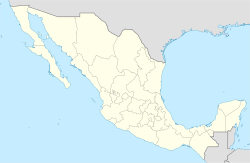Isla Rasa facts for kids
| Geography | |
|---|---|
| Location | Gulf of California |
| Coordinates | 28°49′26.12″N 112°58′49.03″W / 28.8239222°N 112.9802861°W |
| Highest elevation | 10 m (30 ft) |
| Administration | |
|
Mexico
|
|
| State | Baja California |
| Demographics | |
| Population | uninhabited |
| Designated: | 2 February 2006 |
| Reference #: | 1603 |
Isla Rasa is a small, special island located in the Gulf of California. This gulf is a large body of water found east of the Baja California Peninsula in Mexico. Isla Rasa is part of the Mexicali Municipality.
Even though it is only about 0.21 square miles big, this island is very important. It has three small ponds and a tiny shed. No people live on Isla Rasa, but it is a busy home for many amazing animals, especially birds.
Contents
Wildlife on Isla Rasa
Isla Rasa is a true paradise for wildlife. It is especially famous for its many birds. But it also has some interesting reptiles.
Reptiles of the Island
The island is home to three types of reptiles. These creatures enjoy the warm climate and rocky areas. They are:
- Phyllodactylus nocticolus, also known as the peninsular leaf-toed gecko. This small lizard is known for its special toes.
- Sauromalus hispidus, or the spiny chuckwalla. This is a larger lizard with a spiky tail.
- Uta stansburiana, which is the common side-blotched lizard. These lizards are often seen scurrying around.
Amazing Bird Colonies
Isla Rasa is incredibly important for birds. It is the main nesting spot for two very special types of seabirds. About 95% of all the world's Heermann's gulls come here to lay their eggs. Also, nearly all of the world's elegant terns choose Isla Rasa for their nests.
These birds travel long distances to reach the island. They gather in huge numbers during nesting season. This makes Isla Rasa a very noisy and exciting place! The island's quiet and safe environment helps these birds raise their young.
Protecting Isla Rasa
Because Isla Rasa is so important for birds, it has been given a special protected status. On February 2, 2006, it became a Ramsar site. A Ramsar site is a wetland area that is important for nature. It is recognized internationally for its unique wildlife. This helps make sure the island and its amazing bird colonies are kept safe for the future.
See also
 In Spanish: Isla Rasa (México) para niños
In Spanish: Isla Rasa (México) para niños


